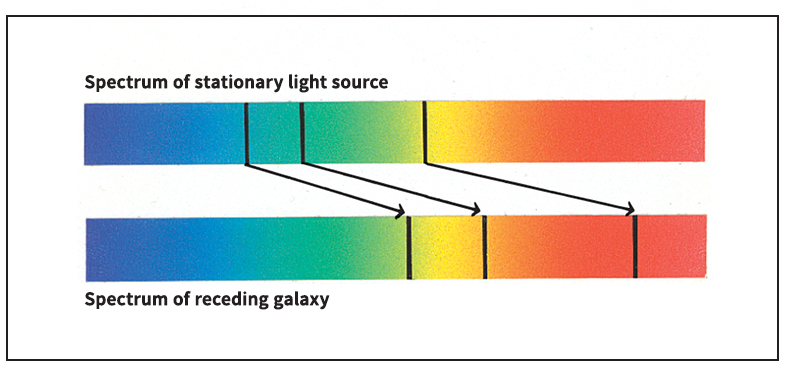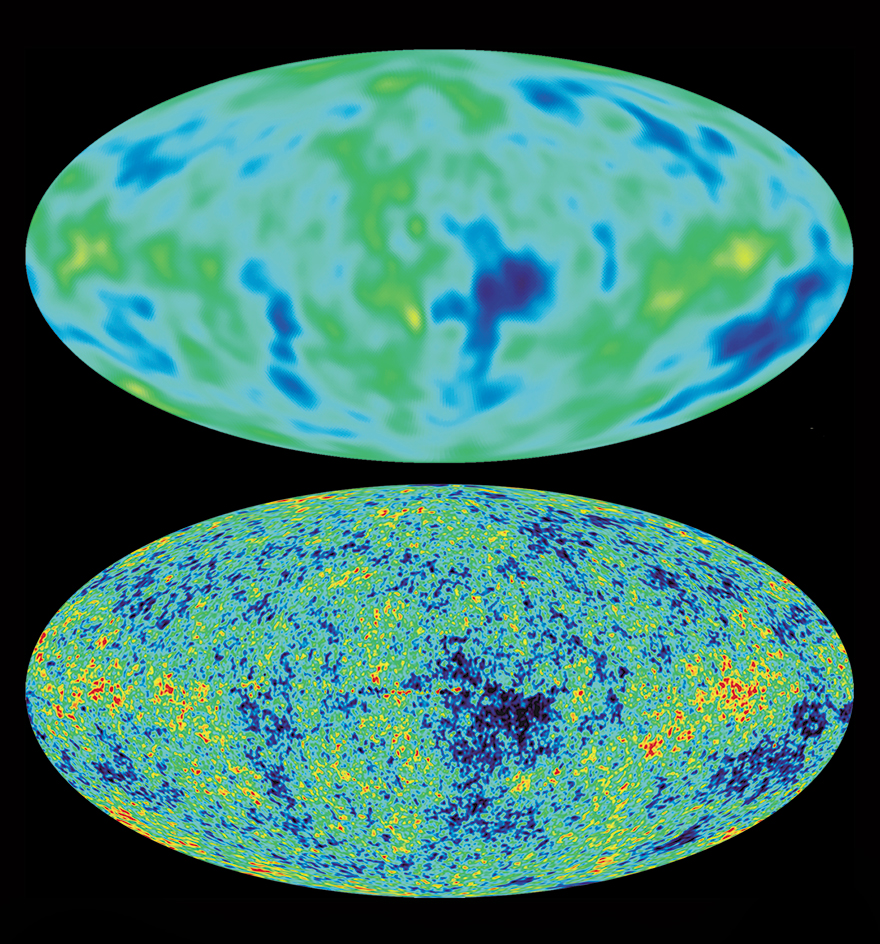Cosmology, << kahz MAHL uh jee, >> in astronomy, is the study of the structure and development of the universe and the forces that shape it. Cosmologists try to explain how the universe formed, what has happened to it since, and what might happen to it in the future.
Six observations have contributed much to modern cosmology: (1) the sky is dark at night; (2) galaxies move away from one another; (3) a type of energy called microwave radiation comes from all directions in the sky; (4) helium is abundant in the universe; (5) the oldest stars are over 13 billion years old; and (6) distant exploding stars called supernovae appear fainter than expected.
The dark sky.
In the 1700’s and 1800’s, astronomers wondered why the sky is dark at night. In the simplest universe they could imagine, stars would be distributed evenly throughout an infinite space. Starlight would therefore arrive at Earth from every direction in space. As a result, the sky would appear completely filled with stars shining as brightly as the sun does. The contradiction between this idea and observations of the night sky indicates that the universe has a more complex structure. This contradiction is called Olbers’s paradox after its author, the German astronomer Heinrich Olbers.
The movement of galaxies.
In the early 1900’s, astronomers analyzed light from stars in distant galaxies. They passed this light through a specially shaped transparent solid called a prism. A prism breaks up light into a rainbowlike band of colors called a spectrum (plural spectra). The color red lies at one end of the spectrum of visible light, and violet lies at the other. The spectrum of light sent out by any star has bright and dark lines that indicate the chemical composition of the star’s outer layers and atmosphere.
Astronomers compared the spectra of the light from stars in the distant galaxies with spectra from similar stars in our galaxy, the Milky Way. They found that the lines in the spectra of distant stars are closer to the red end of the spectrum than are the corresponding lines in the spectra of nearby stars. Astronomers concluded that this effect, called cosmological redshift, occurs because other galaxies are receding (becoming farther away) from the Milky Way. By measuring the redshifts of various galaxies, they determined that the universe is expanding and that all galaxies began receding from one another over 10 billion years ago.

Microwave radiation.
In 1965, astronomers detected faint microwave radiation coming from all directions in space. This radiation is known as the cosmic microwave background (CMB) radiation. The discovery confirmed an important prediction of the big bang theory. The theory holds that the universe began expanding in a cosmic explosion called the big bang. Shortly after the big bang, the heat of the early universe would have produced radiation that cooled as the universe expanded. The CMB radiation closely matches predictions of how this radiation would appear today.

Abundant helium.
About 76 percent of the visible mass (total amount of matter) of the universe is hydrogen, 24 percent is helium, and the remaining small fraction of 1 percent consists of all other chemical elements. Stars make helium nuclei by fusing (combining) hydrogen nuclei in their hot cores. However, the universe has not existed long enough for stars to have produced a 24 percent concentration of helium. Thus, the universe as a whole must once have been hot and dense enough for hydrogen to fuse.
The ages of stars.
Astronomers have calculated the age of the oldest stars in the Milky Way. These stars reside in groups called globular clusters (see Star cluster). All the stars in a cluster form at about the same time. Observations indicate that the stars in the oldest globular clusters are about 13 billion years old. Stars take time to form, so the universe itself must be slightly older, around 13.8 billion years old. This age matches calculations based on measurements of the CMB radiation. The finite (limited) age of the universe helps solve Olbers’s paradox—we cannot see stars that are extremely far away because their light has not had enough time to reach Earth.
Loading the player...Measuring the universe
Faint supernovae.
Supernovae are extremely bright exploding stars. Astronomers know enough about a certain class of supernovae, called Type Ia, to determine the intensity of light they give off. Because light’s intensity decreases with distance, astronomers can determine the distance to a Type Ia supernova by measuring how bright it appears in the sky. In 1998, astronomers reported that Type Ia supernovae in distant galaxies appeared dimmer than would be expected if the universe’s expansion was slowing. The observations suggest that the universe is expanding more and more rapidly.
The future of the universe.
Astronomers have developed models (mathematical descriptions) that represent the universe as either expanding, contracting, oscillating (expanding then contracting), or static (neither expanding nor contracting). The universe is currently expanding, but its distant future depends upon the amount of matter and energy it contains today.
Suppose all the matter detected to date is all that exists. There would be an average of about one atom of hydrogen in 1 cubic yard (0.76 cubic meter) of space. The universe would be open—that is, it would continue to expand without limit. Eventually, all stars would exhaust the energy that makes them shine. However, indirect observations suggest there is a large amount of invisible material called dark matter. They also indicate that a little-understood form of energy called dark energy is causing the expansion of the universe to accelerate. Dark matter and dark energy make up 95.4 percent of the overall density of matter and energy in the universe.
The future of the universe depends largely on the as yet unknown nature of the dark energy. For example, dark energy may represent a constant repulsion (pushing away) of every point in space by the surrounding points. If this is the case, the expansion of the universe will continue to accelerate. In time, distant galaxies and even stars in our own galaxy will move away from Earth so fast that their light will no longer reach us. Other models of dark energy predict different futures for the universe.
Other theories.
The steady-state theory holds that the universe has always existed in its present state. As the galaxies move apart, new matter appears between them, forming new galaxies. This theory was once as popular as the big bang theory. Today, however, few scientists believe that the steady-state theory describes the universe as well as the big bang theory does.
Some scientists think that the big bang theory is basically correct, but that the universe underwent an early period of unusually rapid expansion called inflation. This idea is called inflation theory.
